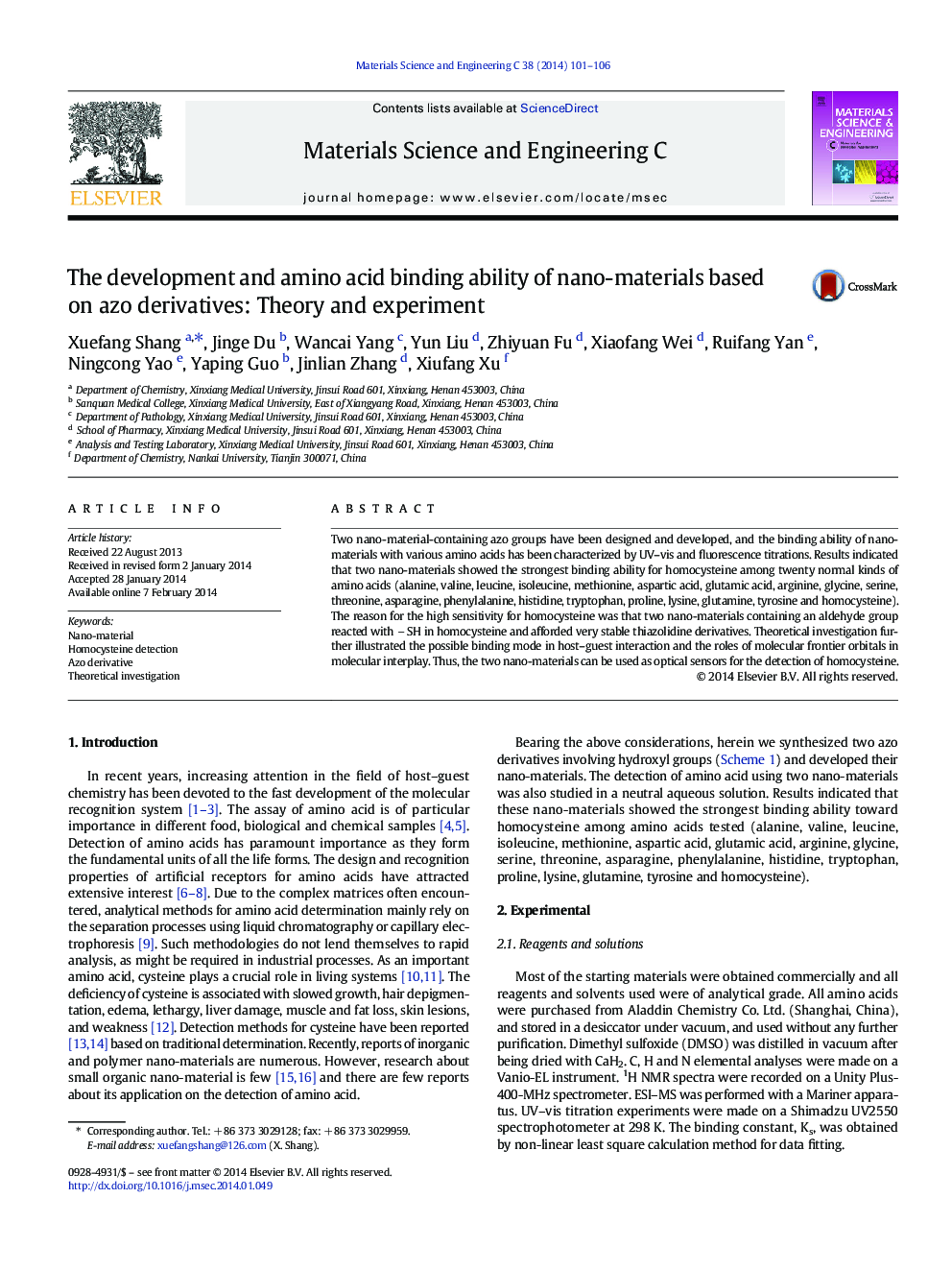| Article ID | Journal | Published Year | Pages | File Type |
|---|---|---|---|---|
| 1428821 | Materials Science and Engineering: C | 2014 | 6 Pages |
•The nano-structures of new azo derivatives have been obtained.•New compounds showed the strong binding ability for homocysteine.•The host–guest interaction was studied by theoretical investigation.
Two nano-material-containing azo groups have been designed and developed, and the binding ability of nano-materials with various amino acids has been characterized by UV–vis and fluorescence titrations. Results indicated that two nano-materials showed the strongest binding ability for homocysteine among twenty normal kinds of amino acids (alanine, valine, leucine, isoleucine, methionine, aspartic acid, glutamic acid, arginine, glycine, serine, threonine, asparagine, phenylalanine, histidine, tryptophan, proline, lysine, glutamine, tyrosine and homocysteine). The reason for the high sensitivity for homocysteine was that two nano-materials containing an aldehyde group reacted with SH in homocysteine and afforded very stable thiazolidine derivatives. Theoretical investigation further illustrated the possible binding mode in host–guest interaction and the roles of molecular frontier orbitals in molecular interplay. Thus, the two nano-materials can be used as optical sensors for the detection of homocysteine.
